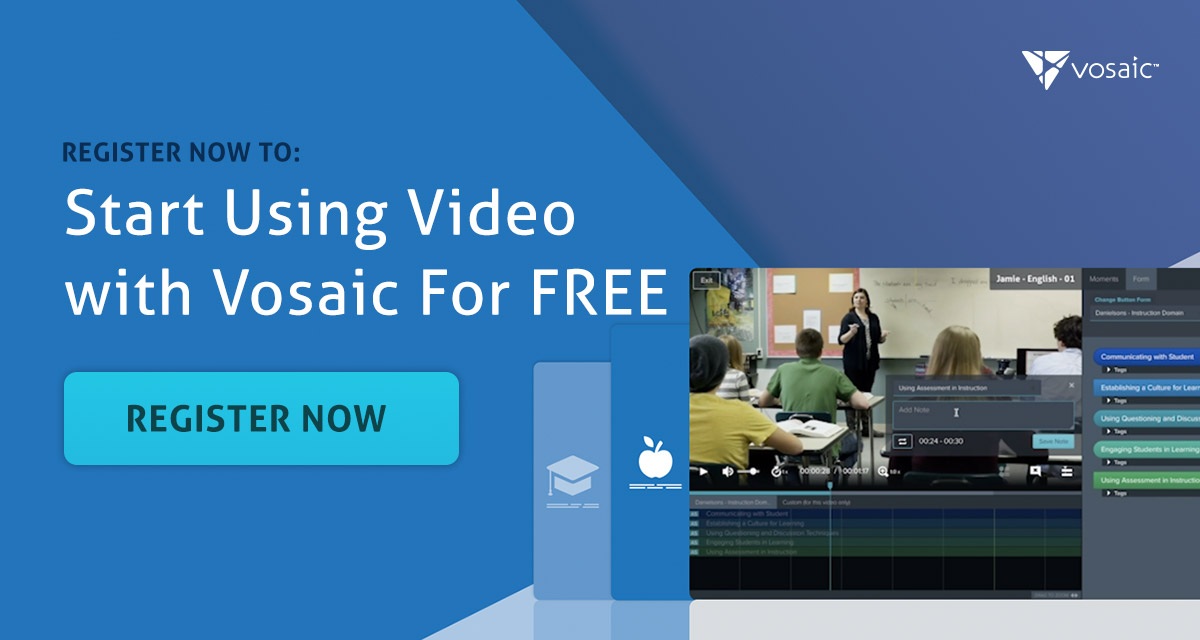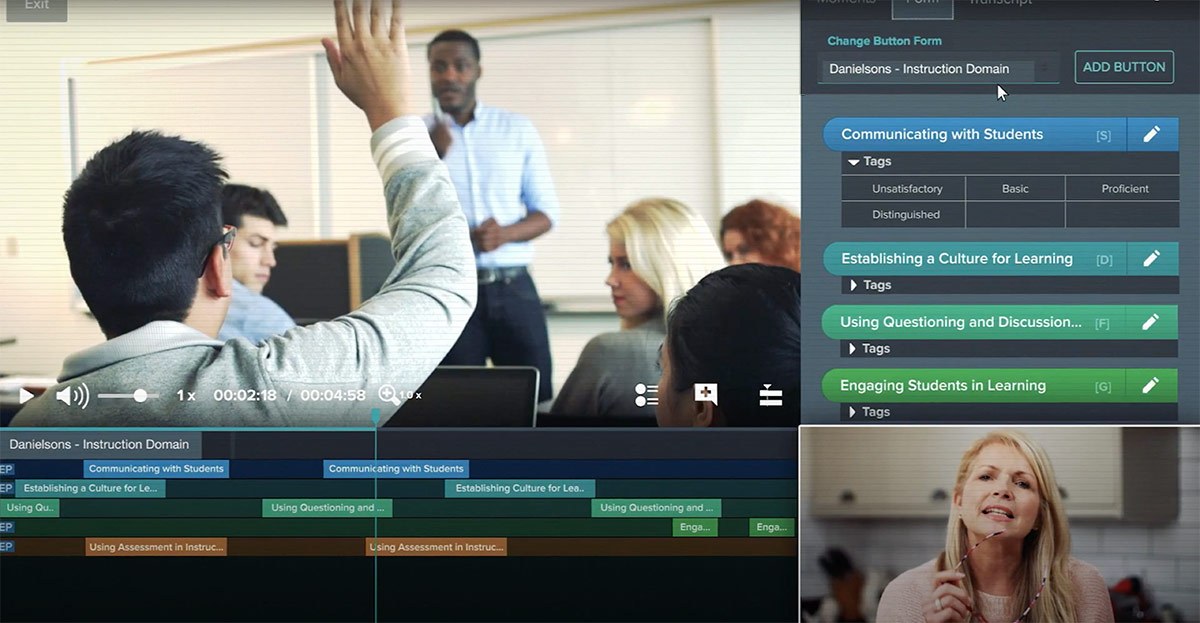After recognizing the benefits of using video to enhance teacher and pre-service teacher observations, schools can be excited to jump right in! However, if what teachers and pre-service teachers see on-screen is not congruent with their self-image of their teaching practices, jumping-ship on video observations becomes tempting, despite the genuine improvement that video observations can make. What’s more, some teachers might have an innately stressful reaction to being recorded in the first place!
How can we handle panic that might ensue as a result of being put “under the spotlight” with video observations? It starts with recognizing the importance of having unbiased information to work with, knowing the science behind why we feel squeamish when watching ourselves on video, and taking adequate steps to make video observations a safe space for teachers and outside observers.
Stay on Top of Important Discoveries
We read case studies and academic journals so you don’t have to. Sign up and we’ll send you the key takeaways.
Before Recording
Motivation and perseverance in the face of this difficulty are best built up by presenting and continuing to present proper reasoning for video observations. A mere understanding of the “why” behind video helps to dispel anxiety. A key reminder for teachers is that video footage only helps them get an accurate picture of what’s going on in the classroom so they can improve outcomes. With regular observations, they should know, opinions biases, and mistakes that misrepresent their teaching can easily sneak in, and sometimes to their detriment.
Why Are We Doing This Again?

In the book “Video in Teacher Learning: Through Their Eyes,” Laura Baecher writes that what we see is different from what we intentionally observe. This is not necessarily the observer’s fault. When our brains try to focus and look for one thing at a time (like written rubrics demand), we notice less about all of our other surroundings. This makes what we can physically view partial, and so makes our observations uninformed and potentially biased.
Utilizing a platform that allows viewers to stop, re-watch, and markup specific moments also supports them to take time and slow down their automatic brain. They are then able to employ the conscious brain and consider only factual evidence; thereby creating non-judgmental teacher observations. This guards against defensiveness that might otherwise appear in teachers being observed.
Vosaic is in and of itself a tool to de-stress teachers because it eradicates that which cannot be perceived in regular observations. In every classroom, training scenario, simulation, or professional evaluation, important learning moments go unnoticed. Vosaic's video analysis software helps you record, identify, and share those moments using video. While there are ways to build quality rubrics that would be a cut above what many schools have to work with currently, video is far and away the preferable way to implement even superior rubrics.
There is a specific explanation that answers why viewing oneself can cause distress and reactions of fear and anxiety. When a teacher is viewing their classroom environment, they seem to themselves to be reacting to stimuli. Their viewpoint is that they are responding moment by moment. However, when teachers observe themselves via video, they qualify actions performed on the recording as innate traits instead of in-the-moment reactions. It’s possible for teachers to put more pressure on themselves when viewing later what they experienced than they allowed while living out those experiences.

The opposite can be true, however. Teachers might suspect that they are performing poorly, and then come to find through video use that their strategies and outcomes are highly favorable. Again, the goal of video observations is to dispel any gap between what is perceived and what is actually taking place.
While understanding that disparities may exist in rubric observations and that video observations are only in place for their benefit is helpful for reducing teacher stress, there are a few other practical tips and tricks to make shifting to video observations an easy process.
During Recording
Implement a recording process that allows teachers to use their own devices or any they are comfortable with. This piece of control they are afforded can do wonders for comfortability level. If teachers desire higher video quality, there is an application they can download to achieve it while still utilizing their own device. Ask them first for a shorter clip of only a few minutes in length before entire lessons are captured.
Ensure that teachers have the ability to record videos of their teaching practices for their personal use before having to share anything. Creating the opportunity for practice runs will immediately put their minds at ease. Confirm that the videos they record are their property to do what they will with. Vosaic allows teachers to securely record as many videos as they need before sharing them with anyone.
Offer to sit in on their initial video observations to confirm that the recording process runs smoothly.
After Recording
Providing a video of yourself for teachers to review can vastly improve their confidence levels towards sharing their own with other teachers or observers. Another option is to present unknown teachers’ videos so that new observers can get comfortable with non-evaluative observations before they jump in.
Place teachers who have practiced with your or others’ videos in groups with the intention of being evaluative but non-judgmental. When teachers perform video analysis of their teaching practices within a group, they feel accountable to create real change to their teaching practices, for the better. Furthermore, when teachers perform this process of evaluation with the same group over a long period of time, they further trust the feedback they receive.
Equip teachers with training on helpful video-editing techniques. Some basic skills can aid in isolating sections of larger video lessons and provide more focus surrounding a video observation. From there, using methods like tallying and transcription can stop judgment in its tracks and leave teachers with just the facts they need. Using a predetermined rubric can relieve stress rooted in the uncertainty of what to watch for within recorded video lessons.
Practice intentional listening while meeting with teachers about their findings (more on this to come in a future article). Overall, when people feel listened to, they begin to more fully listen to themselves and are thereby able to make clear what they are specifically trying to say.
About Vosaic
Vosaic’s cloud-based video platform is used to help teachers, pre-service teachers, and professionals bridge the gap between theory and practice. Easy-to-use video recording, commenting, and sharing enables users to more effectively observe, coach, and mentor. Teachers and coaches can upload, record, and share videos for evaluations, feedback, self-reflection, and so much more.




